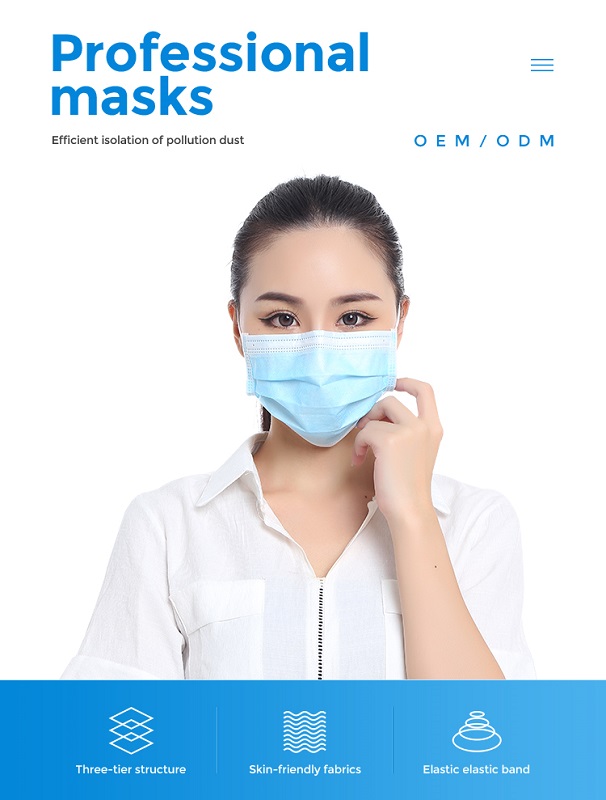Firstly, the Face Mask Manufacturer has turned our ideas about life upside down and forced us to remember the basic ways to protect our health. During the pandemic, we have learned not only to “manically” treat the cleanliness of hands and door handles, to ventilate the premises endlessly, but even to sew masks from improvised materials.

However, still not everyone knows what is the difference between a mask, a bandage and a respirator? It's time to put an end to this, and at the same time systematize the rules for their selection.
The difference between a medical face mask manufacturer and a respirator lies in their purpose. The task of the first is to prevent the contact of mucus and sputum of one person with another.
The second should not allow even the smallest fraction of dust to enter the human body. Based on this, we can conclude that respirators are more reliable defenders against various kinds of particles.
In addition, masks design for short-term use, while respirators often have replaceable filters and can last for years.
Their main difference from medical masks lies in design, material and wear. As a rule, they are sewn from natural fabrics (cotton) for reusable daily use. The assortment in terms of face mask manufacturer design solutions is very wide: from low-key folk ornaments to full-color printing, for example, muzzles of different animals.
However, in everyday life or even daily medical practice, disposable spun bond masks are enough. I use it for a trip in transport or during a doctor's appointment - and threw it away without any problems!
Separately, we single out protective shields (screens) for the face. Due to the pandemic, supermarket cashiers began to wear them. They are more reliable face mask manufacturer and more comfortable than a respirator.
The main thing is to wash them in time and prevent scratches on the screen itself. When choosing them, you should take into account weight, headband adjustment, screen material, resistance to mechanical stress and, of course, appearance.
Interesting to know: At one time, scientists from various countries is conducts research to find out what are more effective in the daily work of a doctor - masks or respirators. Their conclusions were unanimous:
Respirators are a little more effective, but if you do not neglect the rules of wearing, then the face mask manufacturer perfectly blocks and reduces the risk of respiratory diseases. Australian researchers went further than others, who decided to understand whether the significance of the mask exaggerate? As part of the experiment, they observed several dozen families.
As a result, it was found that people without a mask are at greater risk, and their chance of catching a respiratory infection is 4 times higher.
I - characterizes by the fact that they block 95% of the bacteria of the inhaled air, but do not protect against splashes. Such masks recommend exclusively for patients;
II - filter out at least 98% of aerosol droplets. Use by doctors and nurses;
IIR - differ from the previous type by the presence of an additional layer. Masks of this type recommend for surgeons and operating nurses.
Note that during the tests, face mask manufacturer goes through various parameters.

But when testing respirators, a different approach uses. The test subject puts on a sample of the product and performs physical exercises while an aerosol with particle sizes from 400 to 600 nanometers sprays near him. Thus, the degree of filtration and the usability of the respirator check.
FFP1 face mask manufacturers offer low efficiency respirator capable of retaining at least 80% of coarse aerosol dust. It uses for protection at 4 MPC (maximum permissible concentration) in construction and woodworking. Well filters out particles of coal, cement, wood and metal sawdust;
FFP2 - medium efficiency class, blocks from 94% of particles. It also filters fine and liquid aerosols (water, oil) with air pollution up to 12 MPC. It applies to filtering of dust of average toxicity, to electric welding, joiner's works with firm wood;
FFP3 face mask manufacturers are high performance respirators capable of retaining at least 99% of particles. Design to operate at 30–50 MPC. Not afraid of toxic and radioactive dust. Capture asbestos and even mold spores.
There are even more advanced respirators with an additional layer, for example, coal, which protects against organic vapors and gases in concentrations up to 1 MPC.
For half masks (respirators that cover half the face) there is a classification. It also has a division into 3 types (P1, P2 and P3). In general, they duplicate the characteristics of the respiratory classes, only in the latter the filtering capacity should be even greater and be 99.95%.
Face mask manufacturers allow the maximum allowable concentration of chemicals in the air, which does not harm a person. There are various methods for calculating MPC. The choice of this or that method determines by the environment, the purpose of the calculation and other factors.
Masks are made from fabric (cotton) or non-woven materials (spun bond). The first group uses for everyday masks. From the second, medical ones are made. As a rule, spun bond or melt blown uses for this.
According to some studies, the filtering power of cloth and non-woven masks is comparable. Interestingly, first of all, the degree of protection affects not by the number of layers, but by the density of the fabric. For example, a two-layer gauze bandage will be several times less effective than a thick cotton mask.
The two-layer products of face mask manufacturers (for example, made of cotton and polyester) are most effective, because natural fabric absorbs moisture well, while synthetic fabric has a high degree of filtration.
Due to the pandemic, masks have turned from purely functional protection attributes into designer accessories, because they have become part of everyday “bows”. There are various, including designer, lines and exclusive models.
One of the most popular and stylish solutions is black masks. They use by both men and women.